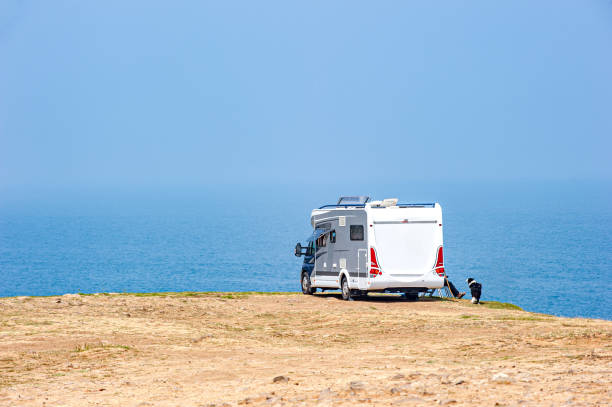

Owning an RV brings freedom and unforgettable trips, but common issues can derail plans fast. This guide delivers clear, actionable fixes for the problems RV owners face most often. Learn quick steps to handle electrical failures, plumbing leaks, slide-out jams, HVAC troubles, and roof issues. Key takeaways: how to diagnose fast, tools to carry for roadside repairs, and simple preventive checks that save big later. Read on to gain practical solutions that get an RV back on the road quickly and keep downtime to a minimum.

Electrical faults are a top cause of roadside headaches. Symptoms include dead batteries, flickering lights, or tripped breakers. First, check the battery voltage and terminal corrosion. Tighten loose connections and clean terminals with a baking-soda paste. Replace blown fuses and test outlets with a multimeter. Carry a portable battery pack, basic fuses, and a surge protector. For longer-term reliability, consider installing a battery monitor and periodic charging with a solar trickle charger. Trusted online resources like shootingstar-rvresort offer gear reviews that help choose reliable electrical accessories.
Water issues ruin trips fast. Look for damp spots, low water pressure, or strange odors. Start by isolating leaks—turn off the water pump and check visible hoses, fittings, and valve seams. Replace old O-rings and hose clamps immediately. For clogs, use a hand auger or flush lines with a vinegar and baking-soda solution. A water pressure regulator prevents line stress at camp hookups. Keep a repair kit with spare hoses, clamps, sealant tape, and a compact water pump fuse. Detecting and sealing small leaks early prevents major water damage.
Slide-out systems and mechanical parts need regular attention. If a slide-out won’t move, inspect fuses, control switches, and motor wiring. Lubricate rails and gears with RV-safe grease and remove debris from tracks. Avoid forcing a stuck slide; powering the mechanism while watching for obstructions helps locate the issue. Check tires, brakes, and wheel bearings before every long trip. Maintain a basic mechanical toolkit and gear lube. Routine inspections reduce the risk of being stranded due to mechanical failure.
Climate control and appliances affect comfort and safety. If the AC blows warm air, check the filter, condenser coils, and fuses. A weak propane flame or heater fault often signals low propane or a bad regulator—inspect tanks and lines for leaks. For refrigerators, ensure proper ventilation and a level parking position. Carry spare filters, duct tape, a pocket multimeter, and a small propane leak detector. Test appliances before each journey and follow a quick startup checklist to confirm everything works at departure.

Exterior damage leads to costly repairs down the road. Inspect the roof after storms and seasonally for cracks, punctures, or failing seals. Re-seal vents, seams, and roof attachments with approved RV sealant. Clean the roof regularly to avoid mold and grit that degrade material. Check the awning fabric for tears and clean slide seals to keep them flexible. Proper storage during off-season reduces UV and weather damage. Small, timely exterior repairs prevent leaks and maintain resale value.
A: A compact toolkit should include a multimeter, spare fuses, hose clamps, O-rings, duct tape, a tire gauge, basic hand tools, and a small battery pack.
A: Perform basic checks before every trip. Do a thorough inspection at least once per season and before long-haul travel.
A: Many issues like debris, lubrication, and blown fuses can be handled quickly. Complex motor or gear failures may require a technician.
This usually happens due to a dirty air filter, low refrigerant levels, or blocked airflow. Start by cleaning or replacing the air filter, then check the vents for obstructions. If the issue persists, you may need professional servicing to recharge the refrigerant or repair internal components.
Frequent battery drain often happens when appliances are left on, the battery is old, or the charging system is faulty. First, make sure lights and electronics are turned off when not in use. Test your converter and alternator to confirm they are charging properly. If the battery is more than 3–5 years old, consider replacing it.
Low water pressure can be caused by clogged aerators, a faulty water pump, or issues with the campground’s water supply. Try cleaning the faucet aerators and checking the RV water filter for clogs. If using an external water source, install a pressure regulator to ensure steady flow. If the pump is weak, it may need repair or replacement.
Quick fixes and routine checks keep RV adventures smooth. Focus on fast diagnostics, carrying essential tools, and performing preventive maintenance. Addressing electrical, plumbing, mechanical, and exterior issues early prevents costly breakdowns. Use reliable online resources and product reviews—such as the shootingstar-rvresort website—to pick tools and parts with confidence. With simple habits and a small repair kit, most common RV problems can be resolved fast, keeping travel plans intact and stress low.